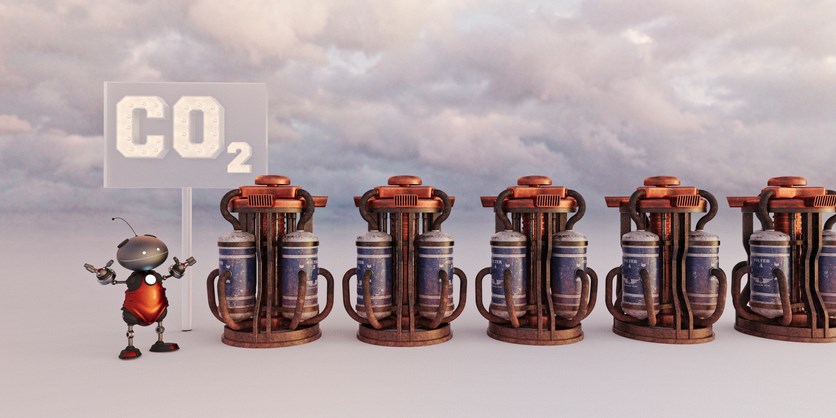COP26 in Glasgow is likely to call for even more ambitious GHG emission reduction targets than the ones that have been consistently missed by virtually all countries. Canada’s existing target of reaching net-zero emissions by 2050 is daunting enough as is.
Strangely, much of the focus of carbon policy has been on reducing the amount of carbon generated, with little attention paid to carbon capture, utilization, and storage (CCUS). Yet CCUS technologies have the potential not only to reduce but to actually reverse rising atmospheric GHG. In fact, we simply cannot achieve carbon neutrality without them. Barrelling ahead without recognizing and acting on that fact would have very harmful effects on our economic growth and standard of living.
For one thing, some heavy industries, such as cement production, emit GHGs in essential processes that would be very hard to replace. Therefore, they need other strategies to achieve emissions reductions of the magnitude required to reach net-zero. Cement manufacturing alone currently produces eight per cent of CO2 emissions. But it does so in a very concentrated way, as the cement is cooked in giant kilns that lends itself to carbon capture. There is a real opportunity to reduce GHG emissions through decarbonization, and not only in the cement industry.
CCUS could also work for energy. Most CCUS technologies can absorb 85 to 95 per cent of the CO2 produced by a power plant – though obviously at a cost. Worldwide, coal-fired power plants generated about 30 per cent of total CO2 emissions in 2018, so capturing most of that carbon would make a big dent in total emissions.
Ottawa has recognized CCUS technologies as being important in the move to net-zero, but challenges remain. In particular, high front-end and operating costs can discourage the uptake and large-scale deployment of these technologies. In order to enable and encourage commercial CCUS, government mechanisms need to provide incentives for entrepreneurs to do what they do best: innovate.
That does not mean picking winners and losers or favouring particular industry players. But, unlike many measures in Canada’s climate change strategy that involve uncertainties, competitive disadvantages, and job losses for manufacturing and other sectors, well-designed measures to encourage the capture and utilization or storage of carbon emissions could be less costly overall while still helping to achieve Canada’s climate goals.
For instance, although an investment tax credit for capital invested in CCUS projects is in the works for 2022, its implementation needs to minimize market distortions. At the moment, “enhanced oil recovery” (EOR) projects, which capture and permanently store carbon, would be ineligible for the credit simply because they involve extraction. This exception should be eliminated. If oil extraction can be made less carbon-intensive, there is no reason, except pure ideology, to try to suppress it.
Because non-refundable tax credits tend to favour incumbent firms that have established revenues, the tax credit should be refundable. This would level the playing field for start-ups and others with negative or fluctuating tax liability.
What about a tax credit based on performance? A potential model is the U.S.’s performance-based “Section 45Q Tax Credit,” which offers eligible facilities and projects (including EOR projects) a tax credit for each metric tonne of carbon captured, provided a number of conditions are met. A Canadian performance-based tax credit could be wedded to the existing federal carbon tax and based on net emissions. With appropriate incentives in place, entrepreneurs would innovate to find new ways to capture and store or use more emissions.
Projects need to thrive or not based not on policy-makers’ arbitrary decisions, but on how the market judges them. That said, it is more important than ever to recognize the immense potential of CCUS technologies and to foster a robust, self-sustaining market for them. This will help Ottawa meet its environmental goals while favouring economic growth and preserving a high standard of living for Canadians.
Krystle Wittevrongel is a Public Policy Analyst at the Montreal Economic Institute and the co-author of “Carbon Capture, Utilization, and Storage: Concrete Market-Based Recommendations to Reduce GHG Emissions.”
© Troy Media





